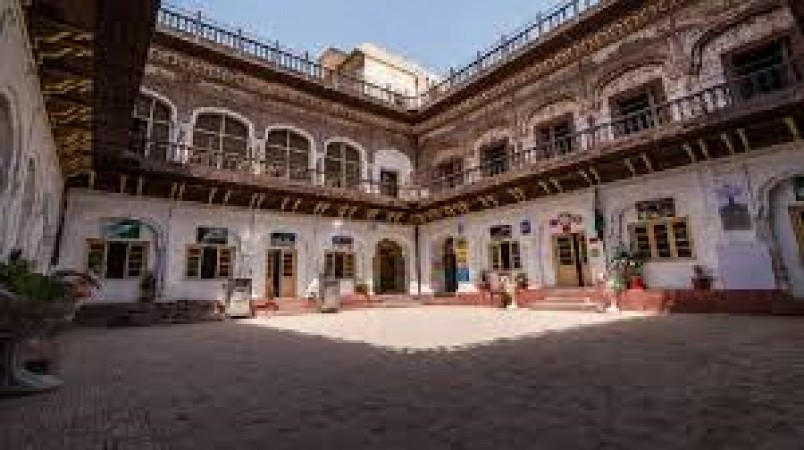
The Mughal Empire, known for its grandeur and architectural brilliance, also mastered the art of keeping their palaces cool in the intense Indian heat. The methods they used were not just functional but also added to the aesthetic beauty of their palaces. Let’s dive into the fascinating techniques employed by the Mughals to maintain a comfortable temperature within their magnificent residences.
The Mughals were inspired by Persian architectural principles, which emphasized harmony with nature. They designed their palaces with natural ventilation and cooling in mind.
Mughal palaces were often constructed using materials like marble and stone, which have excellent thermal properties. These materials absorb heat slowly and release it just as gradually, keeping the interiors cooler for longer periods.
Marble, with its reflective surface, helped in deflecting a significant amount of solar radiation, further aiding in keeping the palaces cool.
High ceilings and large windows were a staple in Mughal architecture. These features promoted better air circulation, allowing hot air to rise and exit through the upper openings while cooler air flowed in from the lower parts.
The walls of Mughal palaces were exceptionally thick, providing natural insulation against the harsh outside temperatures. These thick walls kept the interiors cool during the day and retained warmth during the cooler nights.
One of the most striking features of Mughal palaces is the extensive use of water. Fountains, water channels (known as ‘nahr’), and pools were strategically placed throughout the palaces. The evaporation of water from these features significantly cooled the surrounding air.
Reflecting pools not only added to the aesthetic appeal but also played a critical role in cooling. The water in these pools would absorb heat, lowering the temperature of the air around them.
Wind catchers, or ‘badgirs,’ were another innovative feature. These structures captured the prevailing breezes and directed them into the living spaces. The incoming air would often pass over water channels or wet surfaces, cooling it before it entered the rooms.
Jalis, or lattice screens, were used extensively in Mughal architecture. These screens provided shade while allowing air to flow freely. The intricate patterns also helped diffuse sunlight, reducing glare and heat inside the rooms.
Gardens and courtyards were an integral part of Mughal palaces. Trees and plants provided shade, and the transpiration from the foliage contributed to cooling the air.
The famous Mughal gardens, designed in the charbagh layout (a four-part garden), were not just for beauty. The layout included flowing water and abundant greenery, creating a cooler microclimate around the palaces.
Mughal architects often oriented buildings along a north-south axis to maximize natural cooling. This orientation minimized direct sunlight exposure, particularly during the hottest parts of the day.
Windows were strategically placed to optimize cross-ventilation. This ensured a continuous flow of fresh air, keeping the interiors cool.
The cooling techniques used by the Mughals offer valuable lessons for modern sustainable architecture. Many of these principles can be adapted to contemporary buildings to enhance energy efficiency and reduce reliance on artificial cooling.
There is a growing interest in reviving traditional cooling methods as part of the green building movement. Techniques such as thick walls, high ceilings, water features, and wind catchers are being re-explored to create eco-friendly living spaces. The Mughal Empire's architectural ingenuity extended far beyond mere aesthetics. Their palaces were masterpieces of functional design, utilizing natural materials, strategic layouts, and innovative cooling systems to create comfortable living environments. These ancient techniques, which harmonized with the natural environment, offer timeless solutions that are still relevant today.
Sachin Khilari Defends Gold at World Para Athletics, India Achieves Best-Ever Medal Tally
This new plan of Jio will last for 365 days, you will get free FanCode along with unlimited calling
India's Olympic Boxing Quota in Jeopardy as Parveen Hooda Faces WADA Suspension